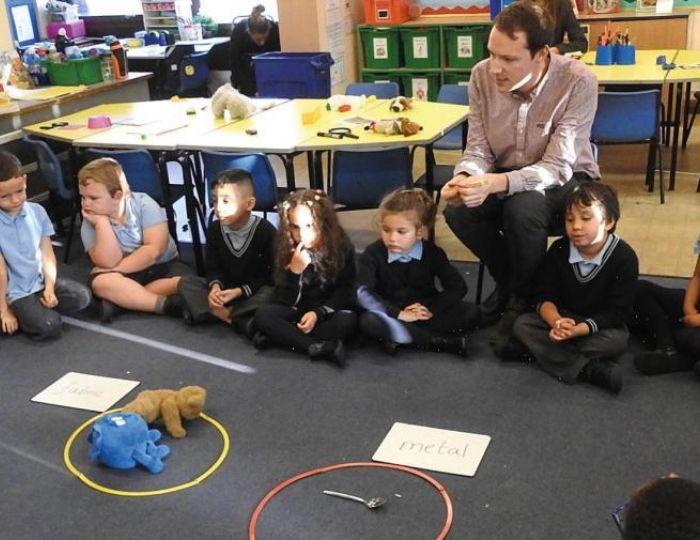Whilst headteachers and the governing board make the final decisions when it comes to redundancies, the preparation of budgets, business cases and presentation of information to staff often falls to SBLs.
For those with relatively little experience of overseeing redundancies, or who are going through the process for the first time, what follows here are some of my own experiences, along with some advice on how best to proceed.
Firstly, don’t be afraid of the process itself, or of the consultation with unions – though it’s best to go in well prepared, well informed and with a detailed business case to support the school’s redundancies request. Engaging early, and endeavouring to maintain a good, clear dialogue and positive working relationship with union representatives could help to avoid a costly unfair dismissal claim later on.
Make the case
My own approach to managing staff redundancies begins with producing an effective and detailed business case. This will likely be the most time consuming stage of the process, but the end result has to be appropriately informative.
Include some background information about the school, and structure it by asking yourself a series of questions. These might include:
- Has the school grown, or do you have a history of a falling roll?
- What will happen to pupil numbers in the next few years?
- How does your spend compare against other similar schools, according to financial benchmarking data?
- What does your current staffing structure look like?
- Have pay increases been factored into your budget plan?
In my own school, a falling pupil roll combined with the new national funding formula made for a very challenging financial year. I’ve purposely not used the term ‘fair’ here, since our current funding arrangements are far from it. Information supplied by our local MP suggests that were the school situated in Hackney, our budget would have received an additional £430,000!
The business case should detail your proposals and why you’re suggesting them. Post-redundancies, what will your new staffing structure look like? Which staff posts have you opted to protect and why? Include a comparison chart that shows your current structure, versus what it will look like after the process.
Keep staff informed
Your business case should also clearly summarise the number of staff you employ currently, and how this will be shaped in future. Useful headings here might include ‘current staffing structure’, ‘proposed staffing structure’, ‘proposed redundancies’ and ‘staff not at risk’.
Outline what information you’ll be providing staff with to support them through the process. This should include the school’s redundancy policy and a redundancy pay calculator (note that for support staff aged 55 or older, this may include a ‘strain payment’ if they belong to a pension scheme).
Information relating to your redundancy selection criteria may already be laid out in your school’s redundancy policy. If not, then you’ll be required to consult with unions to confirm how staff will be selected. If you’ll be using a points-based scheme, how will tie-breaks be decided? If you’re inviting applications for voluntary redundancies, this is the point at which you should make that known, and explain the criteria for selection in the event that you’re oversubscribed.
You may be required to present different selection criteria for teachers and support staff, and will need to clearly explain which redundancy pay calculator will apply to them. It may work out at x2 for teachers and x1.5 for support staff, for example. State also whether staff will be required to engage in a redeployment scheme.
The final additions should include a timeline that clearly sets out each step of the process you intend to follow (see below for an example) and two versions of your 5-year budget plan – one as it currently stands if no redundancies are made, and another showing what effect the redundancies will have on your figures.
Answer questions
For many, the most daunting task of the process will be providing information to, and consulting with the school’s staff and unions. These are unlikely to be particularly comfortable or easy meetings – the unions’ role in this process will obviously be to scrutinise and challenge the school on behalf of their members – but if you’ve already provided the union representatives with a clearly written business case well in advance and briefed both the headteacher and chair of governors, you’ll survive.
During one such process, I was once required to personally present the relevant information to the school staff, which meant standing in front of 20 teachers, 40 support staff and gathered union representatives and informing them why the school needed to make redundancies and how we planned to do it. After a brief introduction by the headteacher, it was my cue to start.
Beforehand, I’d produced and rehearsed a 15-slide PowerPoint presentation which set out some background information concerning the most challenging aspects of our budget – notably the incoming National Funding Formula, teacher pay awards, increased minimum wage, recent pension changes and newly introduced apprenticeship levy.
I also included a series of proposals and details outlining what the next steps for staff would involve. At the conclusion of this initial consultation meeting, all staff were then issued with an information pack containing plenty of details about the process.
In the days following the meeting, staff would approach me regularly and ask lots of questions. A useful tip here is to develop a Q&A sheet that’s regularly updated and distributed to all staff every couple of days, which can help to cut down the repetitive questioning and ensure that everyone receives the same level of information. It’s also a good demonstration to the unions that the school has remained open and offered support to staff throughout the process.
This will inevitably be a tough process for staff, some of whom will blame you personally. However, staff will often feel better if they’re kept well informed and feel that they can have trust in the process, By inviting union reps to the aforementioned consultation meeting, we were able to offer reassurance to staff that we weren’t hiding anything. Two key attributes you should always try to observe throughout the redundancy process are openness and transparency.
The redundancy process
- Preparation of business case
- Membership of staffing and appeals panels agreed by governors
- Union consultation takes place
- Staff consultation takes place
- Deadline for written voluntary redundancy requests
- Deadline for submission of evidence to selection panel
- Meeting of selection panel
- Staff informed of redundancy decisions
- Governors hold first panel representation hearing
- Governors hold second panel representation hearing
- Redundancy notices served
- Appeal panel hearings held
Sue Gawman is an advanced school business manager at Tavistock Primary & Nursery School.










